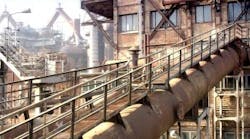The "2014 Operating Benchmarks Report” published in June by the Measurement, Control & Automation Association (MCAA) shows a five-year historical picture from 2009 through 2013. The data shows that automation firms improved their operating income, expressed as a percent of sales, by 2.2 to 7.8 percentage points over the five years — with 2009 being the bottom of the recession for this industry.
The report, which includes aggregated financial information from 48 manufacturing firms and 17 sales channel companies, is the first "pure” picture of the recovery from the recession where all the data is historical, dating back to the bottom of the recession in 2009.
MCAA president Cynthia Esher notes that, "Our industry is undergoing many changes which are reflected in the data that is submitted by participating companies. Acquired companies may become cost centers under large multi-unit organizations, or companies may retain design, sales or administrative functions, while they outsource manufacturing. We review these changes and do our best to show trends, but the readers of this report should know that accounting numbers alone can’t tell the whole story of such shifts in the industry.”
To give some context, the report shows the three-year data, which is available publicly on the top public companies in our industry. The industry as a whole showed operating income as a percent of revenue at 13.3% in 2013 with a 3.6% growth in revenue and flat operating income.
Figure 1. Heavy investment in R&D and tiny revenue growth led to a 24% net loss in operating income for firms under $10 million in size.
The largest companies (over $100 million in sales) showed the smallest growth, but probably were able to withstand the downturn best in the first place, while companies in the middle two groups ($10 to $30 million and $30 to $95 million) had the largest rebound, indicating that they were hit hard back in 2008-2009, and correspondingly had to make dramatic changes to regain ground.Similar to the largest companies, those under $10 million had a 1.4% improvement in operating income, likely retaining administrative costs at the start of the downturn and increasing the same in 2013 because of their private, often family, ownership.
Looking at the comparison in the four reporting groups from 2013 vs. 2012, there was small increase in the net sales (from 0.5 to 8.6%) growth and, in fact, the largest companies had sales in 2013 that were 1.2% lower than 2012.
Looking at operating income, the increase ranged from 5% for the largest companies (lower sales, but also lower cost of goods, yielding 3.7% growth in gross profit). For expenses, large companies significantly cut their R&D spending (note that these companies could have acquired companies or licenses for needed technologies or finished major projects from prior years), while selling and general and administrative expenses both increased.
A similar scenario was true for the mid-large ($30-$90 million) companies, which showed a 5.6% increase in operating income over 2012.
Medium and small companies ($10 to $30 million) had the largest growth in revenue, as well as the largest growth in the cost of goods, but by reducing both R&D and G&A expenses, they showed a very healthy 40% increase in operating income. Note also that these companies increased selling expenses by nearly 20% year-over-year to achieve that growth in revenue.
The under-$10-million group included several companies that invested heavily in R&D, which isn’t surprising as this is the size company that typically is the most innovative. A 32% increase in R&D and very small growth in revenue accounted for a net loss of operating income of 24% for the smallest companies.





